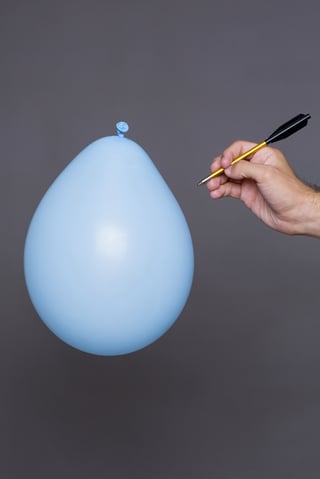
Point of purchase displays, commonly called POP displays in the retail industry, are a proven method for increasing customer interest in certain products and stimulating those customers to buy what's being displayed, often impulsively. Initially, point
of purchase displays were used primarily on or near the checkout counters in stores, which greatly added to creative use o
f a store's floor space since there was often quite a bit of wasted space around these counters. Today, however, you can find point of purchase displays, also sometimes called point of sale (POS) displays, located in other parts of a store. In that respect, they're not technically POP displays because they're not located where purchases are actually being transacted. They can, however, have the same psychological effect on customers in their ability to create the desire to make an unplanned, impulse purchase.
Think of Any Grocery Store
Grocery store checkout counters are notorious for their use of POP displays selling everything from candy bars and chewing gum to newspapers, magazines and items you might suddenly realize you could use but forgot to put on your list. These may include things like:
- Toothbrushes
- Disposable razors
- Batteries
- Aspirin
- Band Aids
- Travel-sized accessories and more
These cash register counter POP displays are typically not too exciting or eye-catching, but are more designed to just present the products for customer consideration while waiting in the checkout line. One of the biggest draws in the checkout area are items that appeal to young children, with the idea that, while the kids are waiting in line with their parents, they'll see these things and do what they think they need to do to get Mom or Dad to buy them something. This may cause some unhappy young faces at checkout time when Mom says “no,” but definitely adds to the store's bottom line when she says “yes.”
Other popular items you'll see at many grocery store checkout counters are gossipy newspapers, or “tabloids,” and magazines with pictures and headlines on the covers designed to grab your attention and make you want to pick one up. The front end of a store is typically one of its most profitable areas because products in this section of the store are seen by almost every customer, either on their way into the store or while they're waiting in the checkout line going out. For this reason, stand-alone displays near the store's entryway usually do especially well when stocked with holiday or seasonal items.
Point of Purchase Display Configurations
Displays near the register may be attached to the end of the counter, sitting atop the counter surface or standing alone in close proximity. Counter top displays should have a small footprint and shouldn't be so tall as to prevent the cashier from having a good line-of-sight to other parts of the store. Surveys show that the brighter, bolder and informative these displays the better they'll pull. Clear signage is critical. Signs should be contrasting in color and provide some information, such as “suitable for children over three years.” Buy one/take one offers will help capture bargain shoppers as will phrases like, “2 for $5.”
What's Better Than Free?
While you may choose to create your own POP displays that have an interesting mix and match of products, many store vendors will provide nice displays already built and stocked with their particular product and let you use it free of charge. Just be careful not to go overboard with too many displays.
Whichever way you go, POP displays have always worked and always will. It's a proven science. Take advantage and reap the rewards.




